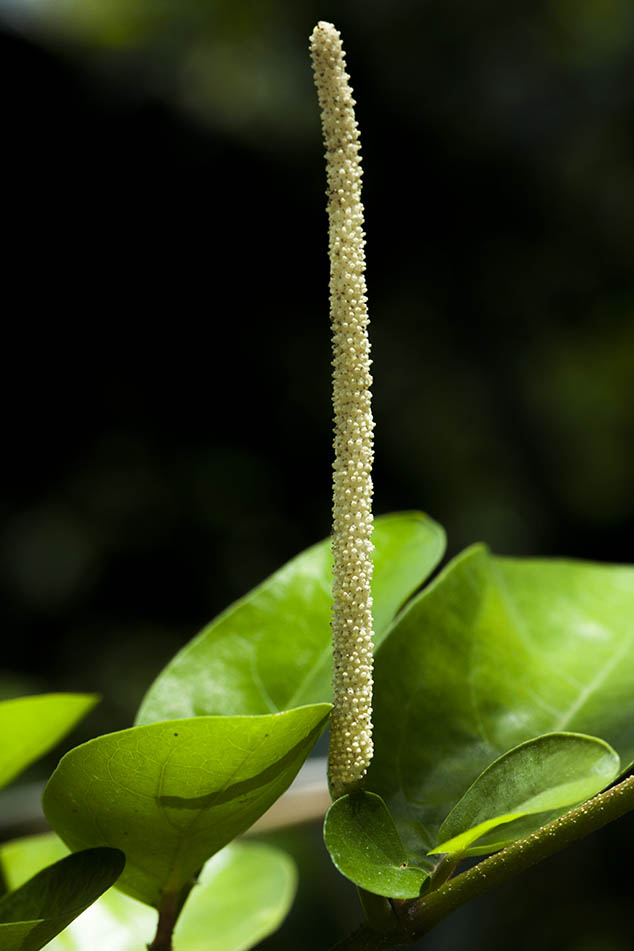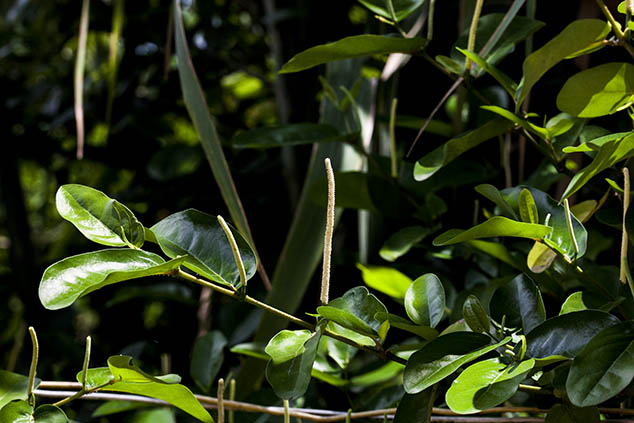In Guatemala and the remaining parts of Mesoamerica there are several species of the genus Piper. I would hope that any local botanist could produce the complete list relatively quickly. But since most of us from North America don’t know Piper species well, I will start with some of the species mentioned most frequently. Of these the first, Piper auritum, is by far the most commonly used.
Hierba santa maria, Piper auritum, Taken at Alta verapaz on June 2012, with a Canon EOS-1Ds Mark III
Piper auritum, Hoja santa, cordoncillo
Piper aduncum synonym Piper angustifolia, Cordoncillo, matico
Piper jacquemontianum
Piper jalapense
Piper psilorhachis (Maya name Chucsuc)
Piper umbellatum
Piper variabile
The plant family is Piperaceae
| Synonym | Español | Kekchi | Maya | English |
|---|
| Piper auritum | - | Hoja santa | Ob’el | - | sacred pepper |
| Piper aduncum | Artanthe adunca Miq., Piper angustifolium Ruz & Rav Piper celtidifolium Kunh Piper elongatum Vahl. |
Matico | - | - | Matico |
| Piper jacquemontianum | Piper citrifolium Lam. Piper wydlerianum (Miq.) C. DC. |
- | - | - | - |
| Piper jalapense | - | - | - | - | - |
| Piper psilorhachis | - | cordoncillo | - | Chucsuc | - |
| Piper umbellatum | Heckeria subpeltata (Willd.) Kunth | - | - | - | - |
| Piper variabile | - | - | - | - | - |
Although I have been drinking tea from pimenta gorda since I was young (I have been learning about plants and animals in Guatemala for over 50 years, since I was 17 years old), I did not know about Piper auritum, Hoja santa, cordoncillo until Universidad del Valle biology student Daniela da’Costa explained it to me. Actually it turns out we have one growing in our interior patio in the FLAAR office garden (as was identified by Priscila Sandoval, biologist graduating from USAC).
Piper auritum as a source of sassafras flavoring for root beer
Piper auritum was once a source of sassafras flavoring for root beer. But people tend to prefer not to drink a product which is potentially carcinogenic, since the leaves of P. auritum have high contents in safrol, the active compound that is carcinogenic. Ironic to this most of the Piper species are commonly used as native medicines throughout Mesoamerica. Plus, whether Piper is carcinogenic to humans is evidently debated.
My gardener loves to gobble down fresh shoots of the Piper which grows in our garden (the species with giant leaves; he eats the shoots, raw, or cooked).
Hierba santa maria, Piper auritum. Taken at Alta verapaz on June 2012, with a Canon EOS-1Ds Mark III
First posted early July 2014














































































